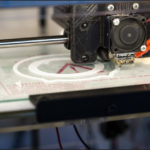Drones, or remote controlled unmanned aerial vehicles (UAVs) began with military purposes in mind. They can be automated or remote piloted and have roots going all the way back to World War I. Still, credit for the inception of the modern drone generally goes to Israeli engineer and inventor Abraham Karem.
They began as weapons, in the form of remotely-guided aerial missile deployers. While the United States has led drone technology and pioneered warfare with the Global Hawk and the Predator, more than 95 countries now operate military drones: a dramatic increase from the few dozen units that operated military drones in the 1990s. Most recently, Turkey, Iran, and China have made inroads into the armed drone market.
While the military utilization of drones will no doubt continue to evolve, the rapid adoption of drones in the civilian world intensifies.
“Like humans and many remarkable inventions, drones are capable of doing harm and of doing good,” says Alberta’s Marc Dumont, a Canadian environmental specialist and drone pilot. He utilizes his UAV in assessing environmental issues and the impacts of beavers on properties, in an effort to protect land, water, and wildlife.
Marc Dumont is now one of hundreds of thousands of certified pilots in the world who mobilize the technology for a plethora of uses. From structural assessments of high rise buildings and the ability to check the structural integrity of aging infrastructure like bridges that prove cumbersome, dangerous and time consuming for physical checks – they have gone mainstream and are set to decrease costs to businesses while increasing safety.
But what of the applications beyond bureaucracy, warfare and business? Are drones capable of doing actual good in the world?
The answer is yes.
According to the World Economic Forum, drones have already made dramatic impacts on the wellbeing of entire communities, helping to save lives and the planet.
“Drones can give operators a birds-eye view of events – including natural disasters – as they unfold. And they can open up difficult-to-access places for emergency supplies to be delivered. This makes them well-suited to help in the response to humanitarian and environmental challenges,” according to the World Economic Forum article.
Drones have already been mobilized to help combat tuberculosis in rural Nepal, where people are so far from care that they often die of simple things. The drones help transport test samples across mountainous areas quickly, and help contain the spread of disease.
In Fiji, severe flooding led to long-standing water, which facilitated an increase in disease-spreading mosquitoes carrying the Zika virus and dengue fever. One solution, the World Economic Forum explains, could be Wolbachia, or a naturally-occurring bacteria that decreases mosquitoes’ ability to transmit some viruses.
WeRobotics engineers and the World Mosquito Program are collaborating to create a temperature-controlled aerial release mechanism for drones that can hold up to “160,000 Wolbachia-treated mosquitoes… Aerial releases are much faster than ground releases and can cover a more expansive area, even during monsoons, helping to protect against dengue fever.”
“The uses of drones are nearly as far-reaching as the imagination,” says Dumont. “Reseeding of plants, assistance in search and rescue efforts after disasters and even monitoring restoration efforts in all the corners of the world.”
In Panama, drones are helping with reseeding efforts of the mangrove forests. In Kenya, drones are helping to reforest land damaged from unsustainable farming practices and deforestation. And, according to the World Economic Forum, drones are also helping to monitor turtle conservation in Goa.
“It seems to me that we as a populace are beginning to understand our responsibilities to the earth and to each other. Innovative technologies can be used to perpetuate good in the world. It is a remarkable thing to be a part of, and to witness,” Alberta’s Marc Dumont says. “Greater collaborations will continue to materialize for the greater good.”
Related Posts












